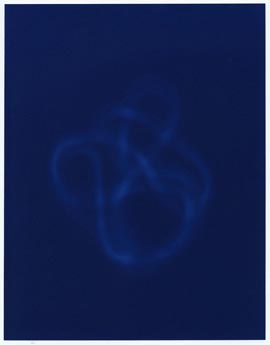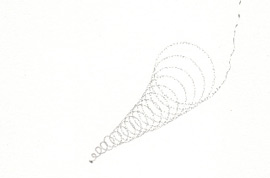Project 12 GOW
July 19th- 19th August 2011
Michael Mulvihill
Cloud Chamber
In May 2011 Professor Stephen Hawking gave a lecture to Google’s Zeitgeist Conference saying that modern Physicist with instruments like the Large Hadron Collider had exceeded the philosopher’s role by revealing the nature of the Universe. Hawking’s statement annoyed many philosophers and this was expressed in a lively spat between Mary Midgley and Professor Peter Atkins on the BBC radio 4’s Today programme. The argument Midgley levelled against scientists such as Hawkings is that its all very well knowing age of the Universe but how does this help someone get out of bed in the morning? (1)
Yet in all the millennia of human civilisation it has only been in the past one hundred or so years that we have made the major, and fundamental discoveries, such as the Sun existing within a galaxy among billions of others in a expanding Universe (it now thought probable that our Universe may also exist among billions of universes.) Emmanuel Kant in his Critique of Practical Reasoning expressed that:
Two things fill the heart with ever renewed and increasing awe and reverence, the more often and the more steady we meditate upon them: the starry firmament above and the moral law within. (2)
The study of the motion of the planets and the heavens by enlightenment astronomers drew “man’s” place further and further away from God’s centre of creation, leading philosophers to question the meaning and justification of aristocratic social hierarchy and human inequality. By the end of the nineteenth century Friedrich Nietzsche proclaimed that God was dead releasing a historical shock wave into the coming Twentieth Century. It was also a time that Science had reached its zenith. Everything in nature could be rationally explained, everything that is except the apparent defying of the First Law of Thermodynamic by the element Radium, discovered by Marie Curie; and the inability to predict the behavior of a blackbody, such as an furnaces, at low frequency energies.
The explanation of these anomalies over turned millennia of human assumption about the nature of reality itself. Foremost among the New Physicists was Albert Einstein. He discovered that space has a form that is bent and curved by mass and gravity acting upon it. Furthermore time is localized, or relative, to an object moving through space; the deeper the curve in space the slower time flows. While the physicists Niels Bohr, and Weiner Heisenberg, would shatter how reality is observed by showing that on a sub atomic scale probability and chance ruled over causality and certainty.
Chance, curved space and relative time would be seized upon by the emerging Modern Artists of the time, none more so than Marcel Duchamp with the oeuvre of work and strategies that culminated in The Large Glass 1915 - 23. Duchamp employed strategies that appropriated this strange new reality, such as allowing chance to dictate the length of Three Standard Stoppages 1914 used to define the dimensions of The Large Glass. Similarly the Artists in Cloud Chamber allow “reality” to act upon the processes used in making their work, and in doing so reveal invisible forces at work in nature. For instance Jo Coupe’s sculpture Suspense 2009 was produced using the powerful magnetic fields of Alcan’s aluminum smelter, while Nick Kennedy’s drawing, Assessment II 2011, combine the forces of chance and angular momentum, which also dictate the trajectories of sub atomic particles as seen in Paul William Mulvihill and Professor Nick Cowern’s Cloud Chamber 2011. Physics continues to push the boundaries of our notions of reality, advancing what the ancient philosophers had begun, it is now perhaps the role of the artist, philosopher and writer to place humanity with in perspective of the awing discoveries of science to best understand the mundane morbidities of the everyday.
- http://news.bbc.co.uk/today/hi/today/newsid_9410000/9410486.stm
- Scruton R (2001) Kant A Very Short Introduction, Oxford University Press


